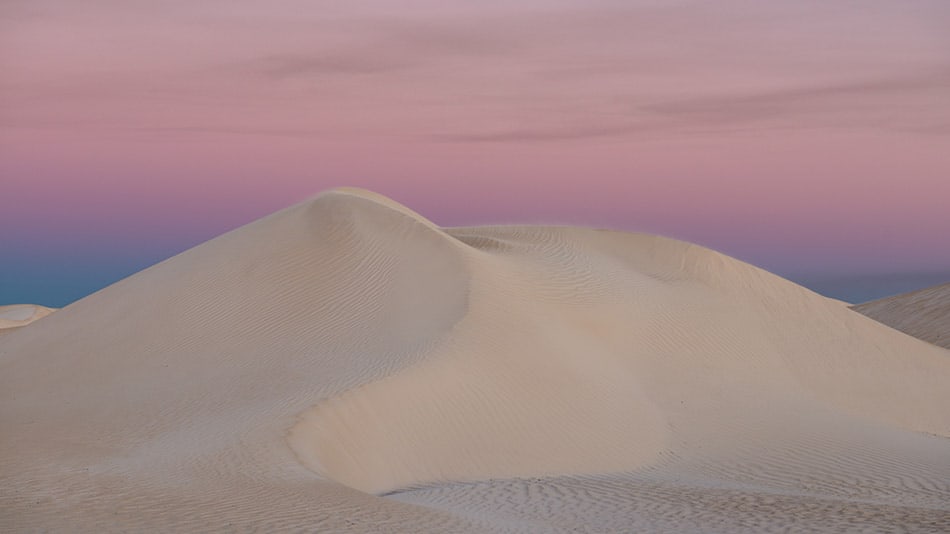You know a great landscape image when you see one. It can take your breath away.
Photos of landscapes that make you pause for a moment and think, “That is stunning!” or, “I want to visit that location.”
To consistantly create compelling images, it’s helpful to know what makes a great landscape photo.
A great landscape photo first catches the viewer’s eye with enticing elements, like colors, textures, or shapes. Then, it holds the viewer’s attention by drawing them into the scene. Impactful landscape images connect with the viewer and engages them, evoking emotion and tells a story.
In today’s world of social media, we come across 1000’s of images every day.
So, what magic do you need to have in your landscape images to help them stand out?
Landscape photography is an art form, and with any art, what makes a landscape image great can be very subjective. However, I want to explore some of the practical aspects you can work on to improve the landscape photos you create.
Include Interest that Catches the Viewer’s Eye
A landscape picture that stands out often impacts the viewer in just the first couple of seconds. Strong landscape photos have one or two elements that gain the initial interest of the viewer, like bold color, unique textures, simple shapes, and appealing curves. This effectively introduces the image to the viewer by catching their eye.
PRO TIP – One or a combination of elements can create that initial impact. However, you don’t have to include all three mentioned below in your image.
Find Bold Colors
Capturing bold colors from the landscape can help your images stand out. This is why sunsets and sunrises are popular subjects to photograph. Don’t try and capture every color from the scene, instead;
- Identify a simple color palette. 1 to 3 colors work well and are pleasing to the eye.
- Tonal variation and graduation of the same color can be effective.
- Look for color combinations that work well together, like the warm oranges of a setting sun over the aqua blues of the ocean.
While colors can be effective in a landscape picture, be careful not to oversaturate colors when editing your images.
PRO TIP – Use a Polarizer to capture punchier, more vibrant colors.
Feature Aesthetic Textures
Naturally occurring textures can draw people to an image. Rough or smooth surfaces can be visually appealing and add an aesthetic element to your landscape photo.
Through including textures, the viewer can imagine what parts of the scene may have felt like.
Likewise, textured patterns in the foreground of an image can gain the viewer’s initial interest and hold their attention.

You can find textures in the sand, rocks, and even seaweed at the beach.
The patterns in the sand created by the water draining out to sea can also make excellent textures in seascape images. Likewise, you can feature bark textures, leaves, or roots growing along the ground in woodlands and forest locations.
For pictures of rivers or waterfalls, moss or flowing water passing underneath the camera can create compelling textures.
Appealing Shapes and Curves
Humans are visual communicators, so we quickly recognize and lock on to shapes. By composing a scene to incorporate naturally occurring forms and curves, the image is more likely to appeal to the viewer.
Look for sweeping curves in your scene like that formed by sand dunes, the bank of rivers, and breaking waves.
Triangles, like the mountains, converging cracks in rocks and fallen trees, are commonly found in nature.
Shapes can also be formed between elements in an image. For example, three rocks can be the apexes of a triangle.

PRO TIP – Don’t force a shape or curve in your image to sacrifice other elements, but keep this in mind when a composition isn’t working.
Draw the Viewer into the Scene
Once an image has grabbed the viewer’s initial attention, a compelling landscape photo draws the viewer into the scene.
How successful a picture is at bringing them into the photo will likely result in either the viewer exploring the image further or quickly moving on.
The composition you set up significantly impacts how much a viewer is pulled into the image.
Using elements that create leading lines from the edge of the image towards the main subject can be effective.
Capturing an interesting foreground leading to the rest of the scene naturally draws the viewer in.
It also helps if the composition guides the viewer’s eye through the image. This makes it easier for the person looking at the picture to make sense of the scene and is a more pleasing experience.
Avoid distracting objects in the picture or elements that stop the ‘flow’ of the eye through the image.
Creating a nice flow in your landscape photo makes it comfortable to view and will encourage further exploration.
Help the Viewer Connect with the Landscape through a Story
One of the main aims of a landscape photo is to help build a connection between the viewer and the landscape scene you are capturing.
To do this, you need to go beyond simply taking a photo of the view, instead capturing the landscape’s story.
What is a Story of the Landscape?
Stories are usually associated with people and their interactions with each other or their environment.
Strictly a landscape image doesn’t include any people, so it can be challenging to determine what is the story.
A story of the landscape is about the elements in the scene, the elements’ characteristics, and how they interact. For example, water flowing over the river rocks, light dispersing through the fog or making the leaves translucent, or frost collecting on blades of grass.

By telling a story that helps the audience build a connection with the landscape, the viewer will more likely be transported into the scene.
They will understand what it was like to be standing where the picture was taken through the story and the emotion it conveys.
Building Emotion in the Image
A Landscape photo that impacts the person looking at the picture expands the story by portraying the mood within the scene.
If done effectively, this can evoke emotion and help the viewer feel what it might have been like standing in front of the scene.
From exhilaration to sorrow, contentment to surprise, and loneness to happiness, these personal reactions can provide another dimension to your landscape photo.
How to Capture and Share Emotion in a Landscape Photo?
Identify the parts of the scene that contribute to the emotions you feel as you stand on location—aspects like the warmth of the light or the exhilaration of the crashing waves.
Then, arrange your composition so these elements and interactions are prominent in your image. So the audience can pick up on how it might feel if they were standing in the location themselves.
Use Color to Capture Emotion
Various elements can evoke emotions within the viewer.
Previously, I mentioned that bold colors can attract a viewer’s attention. Colors are also a powerful way of conveying feelings and emotions.
Warm colors can be interpreted as happiness as well as anger. Cool colors are associated with relaxation or sadness.
Find out more about the psychological effect of colors on The Art Therapy Blog.
Use Texture Shape to Capture Feeling
Texture, particularly in the foreground, can share a real sense of what it felt like on location.
For example, details like dried bark or the cracking mud of a river bed can dramatically portray an arid climate.
Likewise, the winding curve of a sand mound of sand can effectively share the delicate and simple landscape of the sand dunes.

Incorporating detail, shape, and texture can extend the story and enrich the narrative with layers of emotion and mood of the landscape.
Light is a powerful element to use in a landscape image. Effective use of natural light can enhance the other features within the landscape, interactions between elements and build the atmosphere around a location.
For example, sunlight through a translucent leaf and reflective light bouncing off clouds highlight these objects and can resonate with the viewer. Likewise, the ambient light that lingers in dark woodlands can signal a gloomy mood within a picture.
QUICK RECAP
An appealing landscape image grabs the viewer’s attention through some form of initial interest.
A compelling photo engages the viewer and draws them into the scene.
By telling a story of the landscape through your image, the audience can connect with the location.
Enhance your landscape image by indicating to the viewer what the location may have felt like and the emotions they might have if they were to experience the scene for themselves.
